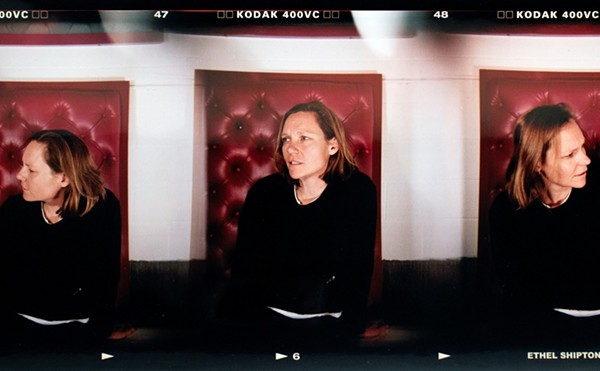On October 2, 1959, Rod Serling introduced his seminal anthology TV series The Twilight Zone to an unsuspecting viewing public. Unlike the plethora of similar shows conceived in that era (Tales of Tomorrow, One Step Beyond, and several others), Serling’s blend of quality production and social awareness cemented the series firmly in the public consciousness. Frequently shown in reruns since its 1964 demise, The Twilight Zone long ago achieved iconic status, becoming part of the pop-culture zeitgeist. Our Lady of the Lake University professor Douglas Brode, along with Serling’s widow, Carol, offers a unique retrospective of the revered show in Rod Serling and the Twilight Zone: The Official 50th Anniversary Tribute (Barricade Books., $24.95).
“Carol `Serling` agreed to talk more openly and honestly about Rod — warts and all — the great things about him, but his personal demons as well,” said Brode of the project’s beginnings. “I would take what she told me and apply them directly to the episodes and show how everything he believed was there.”
Using Carol Serling’s words as a framing device for each chapter, Brode reviews and analyzes some 80 of the show’s 156 episodes. Since several books, most notably Marc Scott Zicree’s exhaustive The Twilight Zone Companion, have explored the entire run, Brode decided to take a different approach. “I wanted to do a book where I only focused on the great ones and put the other ones aside.”
Not merely a puff piece, Rod Serling and the Twilight Zone portrays a complex view of the famed auteur. Brode is the author of more than 30 books, and this delicate balance is central to his body of work.
“I try to show in all my books, beginning with Shakespeare — even going back to Sophocles — to Spielberg today with Disney and Rod Serling in-between, the people I consider the great artists, popular entertainers, the ones who reached the masses — they are the ones who have a very balanced view,” says Brode. “Their politics are not easy. The artists who most move the masses are the ones who have that Yin/Yang between progressivism and traditionalism. And as I show in the book, Rod Serling is exactly that way.”
Brode, a self-professed child of the ’50s, happily proclaims that “Twilight Zone, along with rock ’n’ roll, Walt Disney films, and Westerns `…` formed me.”
Serling befriended the then second-year professor after the pair met at a 1971 Syracuse, New York, community-college event.
“As he was getting ready to leave, I just walked up to him,” Brode recalls. “‘Mr. Serling, I’m Doug Brode. I’m one of the new professors here. I would love to do an interview and article with you.” At the time, Brode was a regular contributor to the now-defunct Premiere-style publication Show Magazine. “Without a moment’s hesitation, he quickly pulled out a piece of paper — didn’t have a business card — wrote down his home phone number, and said, ‘Doug, I’m gonna be busy for the next month. If you can call me one month from today at this number, I’d love to set something up.’ Just like that, and he left. A month later to the day, I dialed the number, and an unmistakable voice picks up at the other end. I started to say, ‘Mr. Serling, you probably won’t remember me.’ ‘Yeah, is this Doug?’
The duo became fast friends and Serling became a mentor to the young Brode. Four years later, Serling died.
The early feedback on Rod Serling and the Twilight Zone has been overwhelmingly positive. Writer-producer Earl Hamner Jr. called it “A timely commentary on TV’s first truly great filmed weekly dramatic series The Twilight Zone, a show that has clearly passed the test of time and speaks again to each new generation of devoted fans.”
Director Rod Lurie lavished even more praise: “Brode, the finest scholar of American popular culture working today, has here written what is easily the most definitive study of The Twilight Zone — or any television program, for that matter!”
But one commentator meant more than all the others. According to Brode, the great Richard Matheson, who penned many influential sci-fi/fantasy works (I Am Legend, The Shrinking Man) and was responsible for several of the most beloved and memorable Twilight Zone scripts, including “Nightmare at 20,000 Feet,” “Nick of Time,” and “It’s a Good Life,” told Carol Serling: “`Brode` saw things in my story that I never really intended to be there but that I learned about myself from him. I may never have intended them, but they are there!”
Brode currently splits his year between Our Lady of the Lake University and Syracuse University’s prestigious S.I. Newhouse School of Public Communication, where he teaches pop culture, film history, and writing. A lifelong fan of Texas, San Antonio, and the Alamo, Brode is currently working along with illustrator Joe Orsak on the McFarland Press graphic novel Yellow Rose of Texas. Set almost entirely in 1836 San Antonio, the tale relates the story of African-American Texas Revolutionary War hero Emily Morgan. No publication date is currently set for Yellow Rose, but in October the University of Texas Press offers Shooting Stars of the Small Screen: Encyclopedia of TV Western Actors (1946-Present), showcasing more of Bode’s obsessive pop-culture knowledge. •
WORDS
Douglas Brode: Rod Serling and the Twilight Zone
5pm Thu, Feb 12
Free
The Twig
5005 Broadway
(210) 826-6411
thetwig.com















